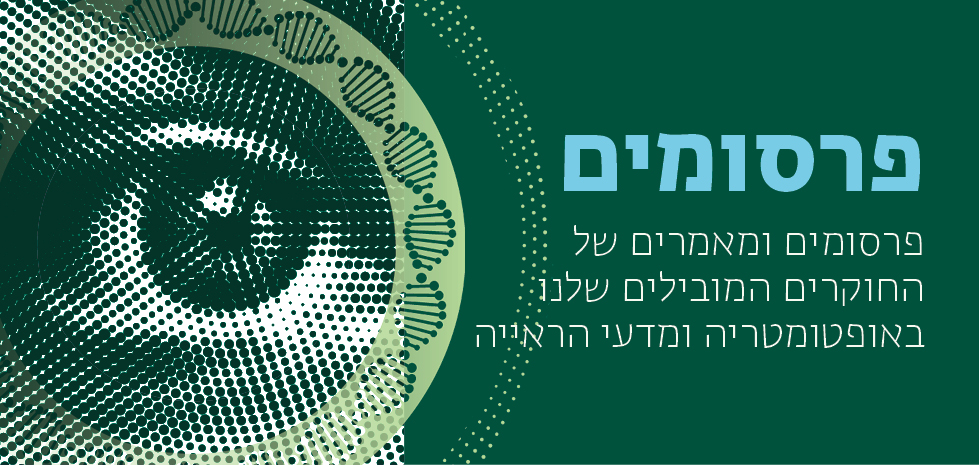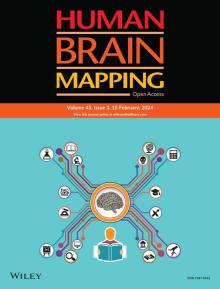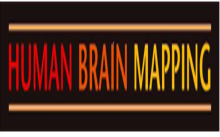ספרים ומאמרים

-

?What Factors Affect Binocular Summation
תקצירBinocular vision may serve as a good model for research on awareness. Binocular summation (BS) can be defined as the superiority of binocular over monocular visual performance. Early studies of BS found an improvement of a factor of about 1.4 (empirically), leading to models suggesting a quadratic summation of the two monocular inputs (√2). Neural interaction modulates a target's visibility within the same eye or between eyes (facilitation or suppression). Recent results indicated that at a closely flanked stimulus, BS is characterized by instability; it relies on the specific order in which the stimulus condition is displayed. Otherwise, BS is stable. These results were revealed in experiments where the tested eye was open, whereas the other eye was occluded (mono-optic glasses, blocked presentation); thus, the participants were aware of the tested eye. Therefore, in this study, we repeated the same experiments but utilized stereoscopic glasses (intermixed at random presentation) to control the monocular and binocular vision, thus potentially eliminating awareness of the tested condition. The stimuli consisted of a central vertically oriented Gabor target and high-contrast Gabor flankers positioned in two configurations (orthogonal or collinear) with target-flanker separations of either two or three wavelengths (λ), presented at four different presentation times (40, 80, 120, and 200 ms). The results indicate that when utilizing stereoscopic glasses and mixing the testing conditions, the BS is normal, raising the possibility that awareness may be involved.
-

Generalization in perceptual learning across stimuli and tasks
תקצירPerceptual learning, known to improve visual perception, demonstrates the plasticity of brain processes underlying vision. Early studies, using the backward-masked texture discrimination task (TDT), focused on the lack of generalizing learning to stimulus features, relating learning specificity to the selectivity of the brain networks involved in the visual task. Learning was found to be highly specific to the stimulus features, as expected from the processing selectivity found in early visual areas as well as to the task employed in training, pointing to top-down effects. More recent studies demonstrate the generalization of learning to untrained features under specifically designed training procedures. Here we suggest that transfer of learning takes place when the trained and untrained stimuli and task activate overlapping brain processes. We tested the effect of TDT learning, under conditions with and without visual adaptation, on the contrast detection (CD) of localized Gabor targets, either alone or backward masked (BM). At the TDT peripheral-target location, we found that the transfer of learning between TDT to CD and BM occurs under the TDT adaptation condition, but not under the no-adaptation condition, whereas at the TDT center-target location we found that transfer occurs for both conditions. Our results suggest that learning generalization across experimental conditions depends on overlapping neural processes within brain networks, here dominated by the inhibitory effects involved in adaptation and in spatiotemporal masking. Importantly, increased adaptation during training, due to increased stimulus consistency, enabled the transfer of learning to other tasks limited by sensory adaptation.
-

Dynamics of the perceptive field size in human adults
תקצירThe receptive field (RF) is the fundamental processing unit of human vision; both masking and crowding depend on its size. The RF has a psychophysical corresponding term, the perceptive field (PF); whereas the RF is measured physiologically, the PF is measured psychophysically (a perceptual response). We investigated how spatial (lateral interactions), temporal (the stimulus presentation time), and the procedure affect the PF size for both monocular and binocular viewing. The stimuli consisted of a central vertically oriented Gabor target and high-contrast Gabor flankers positioned in two configurations (orthogonal or collinear) with target-flanker separations of either 2 or 3 wavelengths (λ). We used two main methods to control the monocular and binocular vision: mono-optic glasses vs. stereo glasses. The presentation order was either mixed or non-mixed for the presentation time and the eye condition. We estimated the PF size for both monocular and binocular viewing at 4 different presentation times (40, 80,120, and 200 ms) with different orders of presentation in each experiment (mono-optic glasses vs. stereo glasses, utilizing the lateral masking paradigm). In each experiment we explored one variable: how changing one parameter would affect the PF size in both monocular and binocular viewing (the temporal duration, the testing order of conditions, and the spatial distance) while keeping the others constant. We found that both the monocular and binocular PF size were dynamic and were significantly affected by the presentation order, leading to reduced lateral suppression under the collinear 2λ condition. Hence, both the monocular and binocular PF size depended on the sequence of the stimulus presentation time and the testing order of the conditions. Furthermore, we found that the binocular PF size was significantly larger than the monocular PF size.
-

Adhesion of retinal cells to gold surfaces by biomimetic molecules
תקצירAbstract
Background: Neural cell-electrode coupling is crucial for effective neural and retinal prostheses. Enhancing this coupling can be achieved through surface modification and geometrical design to increase neuron-electrode proximity. In the current research, we focused on designing and studying various biomolecules as a method to elicit neural cell-electrode adhesion via cell-specific integrin mechanisms.
Methods: We designed extracellular matrix biomimetic molecules with different head sequences (RGD or YIGSR), structures (linear or cyclic), and spacer lengths (short or long). These molecules, anchored by a thiol (SH) group, were deposited onto gold surfaces at various concentrations. We assessed the modifications using contact angle measurements, fluorescence imaging, and X-ray Photoelectron Spectroscopy (XPS). We then analyzed the adhesion of retinal cells and HEK293 cells to the modified surfaces by measuring cell density, surface area, and focal adhesion spots, and examined changes in adhesion-related gene and integrin expression.
Results: Results showed that YIGSR biomolecules significantly enhanced retinal cell adhesion, regardless of spacer length. For HEK293 cells, RGD biomolecules were more effective, especially with cyclic RGD and long spacers. Both cell types showed increased expression of specific adhesion integrins and proteins like vinculin and PTK2; these results were in agreement with the adhesion studies, confirming the cell-specific interactions with modified surfaces.
Conclusion: This study highlights the importance of tailored biomolecules for improving neural cell adhesion to electrodes. By customizing biomolecules to foster specific and effective interactions with adhesion integrins, our study provides valuable insights for enhancing the integration and functionality of retinal prostheses and other neural implants.
Keywords: RGD; YIGSR; biomimetics; cell-adhesion; neural electrode interface; regenerative medicine; retinal prostheses; tissue engineering.
-

Positive and negative facial valence perception are modulated differently by eccentricity in the parafovea: Replication from KDEF to NimStim
תקצירWhile perceiving the emotional state of others may be crucial for our behavior even when this information is present outside of central vision, emotion perception studies typically focus on central visual field. We have recently investigated emotional valence (pleasantness) perception across the parafovea (≤ 4°) and found that for briefly presented (200 ms) emotional face images (from the established KDEF image-set), positive (happy) valence was the least affected by eccentricity (distance from the central visual field) and negative (fearful) valence the most. Furthermore, we found that performance at 2° predicted performance at 4°. Here we tested (n = 37) whether these effects replicate with face stimuli of different identities from a different well-established image-set (NimStim). All our prior findings replicated and eccentricity-based modulation magnitude was smaller with NimStim (~ 16.6% accuracy reduction at 4°) than with KDEF stimuli (~ 27.3% reduction). Our current investigations support our earlier findings that for briefly presented parafoveal stimuli, positive and negative valence perception are differently affected by eccentricity and may be dissociated. Furthermore, our results highlight the importance of investigating emotions beyond central vision and demonstrate commonalities and differences across different image sets in the parafovea, emphasizing the contribution of replication studies to substantiate our knowledge about perceptual mechanisms.
-

Higher-contrast images are better remembered during naturalistic encoding
תקצירIt is unclear whether memory for images of poorer visibility (as low contrast or small size) will be lower due to weak signals elicited in early visual processing stages, or perhaps better since their processing may entail top-down processes (as effort and attention) associated with deeper encoding. We have recently shown that during naturalistic encoding (free viewing without task-related modulations), for image sizes between 3°–24°, bigger images stimulating more visual system processing resources at early processing stages are better remembered. Similar to size, higher contrast leads to higher activity in early visual processing. Therefore, here we hypothesized that during naturalistic encoding, at critical visibility ranges, higher contrast images will lead to higher signal-to-noise ratio and better signal quality flowing downstream and will thus be better remembered. Indeed, we found that during naturalistic encoding higher contrast images were remembered better than lower contrast ones (~ 15% higher accuracy, ~ 1.58 times better) for images at 7.5–60 RMS contrast range. Although image contrast and size modulate early visual processing very differently, our results further substantiate that at poor visibility ranges, during naturalistic non-instructed visual behavior, physical image dimensions (contributing to image visibility) impact image memory.
-

Parafoveal vision reveals qualitative differences between fusiform face area and parahippocampal place area
תקצירThe center-periphery visual field axis guides early visual system organization with enhanced resources devoted to central vision leading to reduced peripheral performance relative to that of central vision (i.e., behavioral eccentricity effect) for many visual functions. The center-periphery organization extends to high-order visual cortex where, for example, the well-studied face-sensitive fusiform face area (FFA) shows sensitivity to central vision and the place-sensitive parahippocampal place area (PPA) shows sensitivity to peripheral vision. As we have recently found that face perception is more sensitive to eccentricity than place perception, here we examined whether these behavioral findings reflect differences in FFA's and PPA's sensitivities to eccentricity. We assumed FFA would show higher sensitivity to eccentricity than PPA would, but that both regions' modulation by eccentricity would be invariant to the viewed category. We parametrically investigated (fMRI, n = 32) how FFA's and PPA's activations are modulated by eccentricity (≤8°) and category (upright/inverted faces/houses) while keeping stimulus size constant. As expected, FFA showed an overall higher sensitivity to eccentricity than PPA. However, both regions' activation modulations by eccentricity were dependent on the viewed category. In FFA, a reduction of activation with growing eccentricity (“BOLD eccentricity effect”) was found (with different amplitudes) for all categories. In PPA however, qualitatively different BOLD eccentricity effect modulations were found (e.g., at 8° mild BOLD eccentricity effect for houses but a reverse BOLD eccentricity effect for faces and no modulation for inverted faces). Our results emphasize that peripheral vision investigations are critical to further our understanding of visual processing.
-

A novel GCaMP6f-RCS rat model for studying electrical stimulation in the degenerated retina
תקצירBackground: Retinal prostheses aim to restore vision by electrically stimulating the remaining viable retinal cells in Retinal Degeneration (RD) cases. Research in this field necessitates a comprehensive analysis of retinal ganglion cells' (RGCs) responses to assess the obtained visual acuity and quality. Here we present a novel animal model which facilitates the optical recording of RGCs activity in an RD rat. This model can significantly enhance the functional evaluation of vision restoration treatments. Methods: The development of the novel rat model is based on crossbreeding a retinal degenerated Royal College of Surgeons (RCS) rat with a transgenic line expressing the genetic calcium indicator GCaMP6f in the RGCs. Characterization of the model was achieved using Optical Coherence Tomography (OCT) imaging, histology, and electroretinography (ERG) at the ages of 4, 8, and 12 weeks. Additionally, optical recordings of RGCs function in response to ex-vivo subretinal electrical stimulations were performed. Results: Histological investigations confirmed the high expression of GCaMP6f in the RGCs and minimal expression in the inner nuclear layer (INL). OCT imaging and histological studies revealed the expected gradual retinal degeneration, as evident by the decrease in retinal thickness with age and the formation of subretinal debris. This degeneration was further confirmed by ERG recordings, which demonstrated a significant decrease in the b-wave amplitude throughout the degeneration process, culminating in its absence at 12 weeks in the GCaMP6f-RCS rat. Importantly, the feasibility of investigating subretinal stimulation was demonstrated, revealing a consistent increase in activation threshold throughout degeneration. Furthermore, an increase in the diameter of the activated area with increasing currents was observed. The spatial spread of the activation area in the GCaMP6f-RCS rat was found to be smaller and exhibited faster activation dynamics compared with the GCaMP6f-LE strain. Conclusion: This novel animal model offers an opportunity to deepen our understanding of prosthetically induced retinal responses, potentially leading to significant advancements in prosthetic interventions in visual impairments.
Keywords: GCaMP6f-RCS; calcium imaging; electrical stimulation; retinal degeneration; retinal protheses.
-

Crowding under scotopic and photopic vision in albino and normal-sighted participants
תקצירCrowding is a phenomenon in which the ability to recognize an object in a clutter deteriorates. It is, therefore, a fundamental aspect of object recognition and crucial in deciphering resolution. For visually impaired individuals, deficiency in crowding has a tremendous effect on vision and may reflect and predict the amount of deterioration in vision. It is well established that albinos suffer much more from crowding than normally sighted individuals under daylight luminance conditions. However, to our knowledge, this study is the first to investigate crowding in albino participants under low light conditions. In this study, we explored the crowding effect in a group of albino participants (n = 9) and a control group of normally sighted participants (n = 9). Crowding was conducted under daylight (photopic vision) and low light (scotopic vision). We measured the visual acuity threshold under crowding in three-letter spacing (0.5, 1, and 1.5) and compared it to a single target. Results indicate that albino participants experienced stronger crowding than the control under the photopic condition, while crowding under the scotopic condition was apparent in the albino but abolished for the control group. These findings highlight the importance of considering luminance when discussing the visually impaired population in general. In particular, it suggests that crowding in albinism is based on a peripheral-like mechanism and may .indicate a cessation in visual development
-

Parafoveal vision reveals qualitative differences between fusiform face area and parahippocampal place area
תקצירThe center-periphery visual field axis guides early visual system organization with enhanced resources devoted to central vision leading to reduced peripheral performance relative to that of central vision (i.e., behavioral eccentricity effect) for many visual functions. The center-periphery organization extends to high-order visual cortex where, for example, the well-studied face-sensitive fusiform face area (FFA) shows sensitivity to central vision and the place-sensitive parahippocampal place area (PPA) shows sensitivity to peripheral vision. As we have recently found that face perception is more sensitive to eccentricity than place perception, here we examined whether these behavioral findings reflect differences in FFA's and PPA's sensitivities to eccentricity. We assumed FFA would show higher sensitivity to eccentricity than PPA would, but that both regions' modulation by eccentricity would be invariant to the viewed category. We parametrically investigated (fMRI, n = 32) how FFA's and PPA's activations are modulated by eccentricity (≤8°) and category (upright/inverted faces/houses) while keeping stimulus size constant. As expected, FFA showed an overall higher sensitivity to eccentricity than PPA. However, both regions' activation modulations by eccentricity were dependent on the viewed category. In FFA, a reduction of activation with growing eccentricity ("BOLD eccentricity effect") was found (with different amplitudes) for all categories. In PPA however, qualitatively different BOLD eccentricity effect modulations were found (e.g., at 8° mild BOLD eccentricity effect for houses but a reverse BOLD eccentricity effect for faces and no modulation for inverted faces). Our results emphasize that peripheral vision investigations are critical to further our understanding of visual processing.



